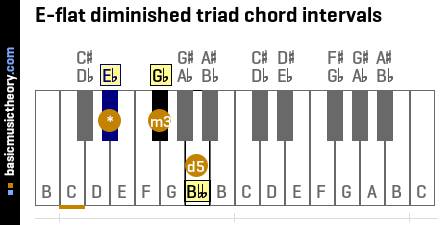Triad chord
| Major | C | C# | Db | D | D# | Eb | E | E# | Fb | F | F# | Gb | G | G# | Ab | A | A# | Bb | B | B# | Cb |
|---|---|---|---|---|---|---|---|---|---|---|---|---|---|---|---|---|---|---|---|---|---|
| Minor | C | C# | Db | D | D# | Eb | E | E# | Fb | F | F# | Gb | G | G# | Ab | A | A# | Bb | B | B# | Cb |
| Augmented | C | C# | Db | D | D# | Eb | E | E# | Fb | F | F# | Gb | G | G# | Ab | A | A# | Bb | B | B# | Cb |
| Diminished | C | C# | Db | D | D# | Eb | E | E# | Fb | F | F# | Gb | G | G# | Ab | A | A# | Bb | B | B# | Cb |
| Suspended 2nd | C | C# | Db | D | D# | Eb | E | E# | Fb | F | F# | Gb | G | G# | Ab | A | A# | Bb | B | B# | Cb |
| Suspended 4th | C | C# | Db | D | D# | Eb | E | E# | Fb | F | F# | Gb | G | G# | Ab | A | A# | Bb | B | B# | Cb |
Triad chord definition and construction
Triad chords contain 3 notes played together, or overlapping.
Triad qualities table
There are 4 different main qualities of triad chords - major, minor, augmented, and diminished.
Each chord differs by the 2nd and 3rd notes as shown below.
| Triad chord quality | 2nd note quality | 3rd note quality |
|---|---|---|
| diminished o | minor (m3) | diminished (d5) |
| minor | minor (m3) | perfect (P5) |
| major | major (M3) | perfect (P5) |
| augmented + | major (M3) | augmented (A5) |
| sus 2nd | major (M2) | perfect (P5) |
| sus 4th | perfect (P4) | perfect (P5) |
An augmented chord is usually shown with a plus symbol: +
A diminished chord is usually shown with a circle symbol: o
Each quality has a different musical flavour, but they all share the same starting note, or root, for a given key.
For example, the Eb major scale has note Eb as the tonic / starting Note, so Eb is the root note of all triad chord qualities in this key.
Triads qualities using the 3rd scale note
The 2nd and 3rd notes of all triad chord qualities above are based on variations of the 3rd and 5th notes of the same major scale (eg. notes G and Bb for E-flat). For example:
The Eb major chord uses these 3rd / 5th note names exactly as they are, with no adjustments.
The Eb minor chord uses the 3rd that is 1 half-tone / semitone / piano key lower than the major quality, so the 3rd note is Gb instead.
The Eb augmented chord uses a 5th that is 1 half-tone / semitone/ piano key higher than the major quality, so the 5th note is B instead.
The Eb diminished chord has both a 3rd and 5th that are 1 half-tone / semitone/ piano key lower than the major quality, so those notes are Gb, Bbb respectively.
To understand why this note is called Bbb, but it is occupying the note A position on the piano diagram below, have a look at the Eb diminished chord page, which explains how note intervals are used to name the individual notes.
The note intervals for the Eb diminished chord are Eb-min-3rd and Eb-dim-5th, whose names are abbreviated on the piano below as m3 and d5.

Suspended triad chords
A suspended chord is known in music theory as an altered chord because it takes one of the above chord qualities and modifies it in some way.
Unlike all of the triads above, suspended triads do not use the 3rd scale note, so it is not possible to classify them as either major or minor. Instead they use either 2nd or 4th note.
So the Eb suspended 4th chord is identical to the Eb major chord except the 2nd note (a major 3rd) is replaced - suspended, in favor a perfect 4th - note Bb.
The Eb suspended 2nd chord is identical to the Eb major chord except the 2nd note (a major 3rd) is replaced - suspended, in favor a major 2nd - note F.
Triad chord inversions
The order of the notes in a triad chord as described above have the root note Eb as the lowest / first note of the chord. This is triad in root position.
By moving the root note up one octave to the end of the chord, the 1st inversion of that triad is created, which now has Gb as the first note in the example above.
By moving the first note of the 1st inversion to the end of that chord, the 2nd inversion is created, which has Bbb as the first note.
Inversions do not change the notes in a triad - they simply change the note order.